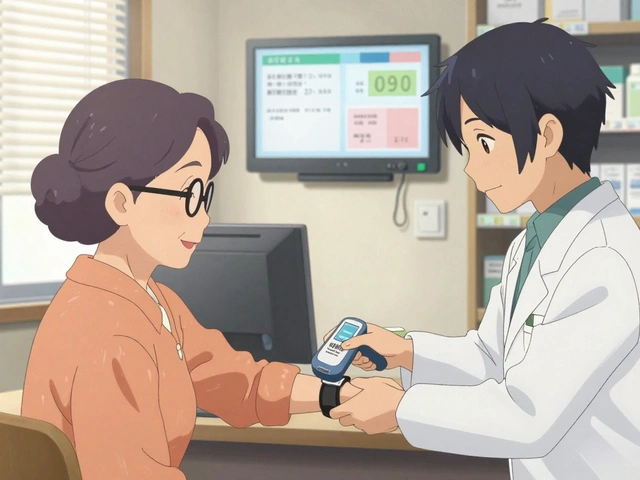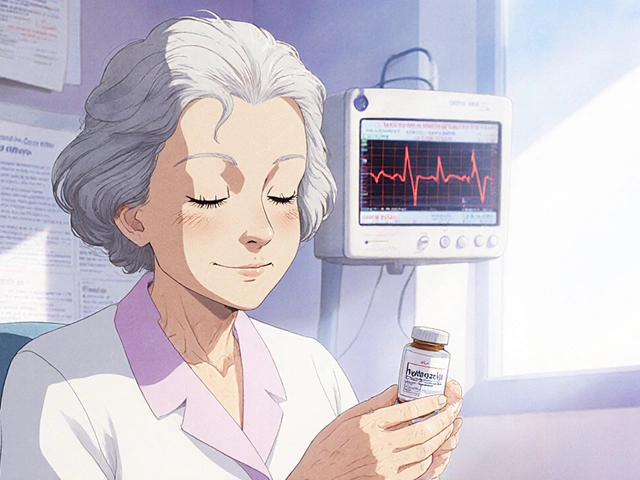Signs and Symptoms: What They Are and How to Spot Them
When your body sends a signal, that’s a sign. When the signal comes with discomfort, pain, or a change in how you feel, that’s a symptom. Together they’re the early clues that tell you something’s off, whether it’s a simple cold or a deeper health issue.
Most people think signs and symptoms are only for doctors, but you can use them every day. Noticing a new rash, a sudden headache, or even a shift in mood can help you decide if you need rest, a home remedy, or a professional check‑up. This guide breaks down the basics, shows you common categories, and gives quick steps to act on what you notice.
Why Paying Attention to Signs and Symptoms Matters
Early detection saves time, money, and often prevents serious complications. A fever that spikes above 101°F could be a sign of infection, while a persistent cough might hint at asthma or allergies. By catching these signals early, you can start treatment sooner and avoid a trip to the emergency room.
Besides health, signs and symptoms affect the way you manage medication. For example, if you take a blood thinner like Plavix, bruising more easily is a symptom you shouldn’t ignore. Knowing which symptoms belong to which medicines helps you stay safe and talk confidently with your pharmacist or doctor.
Common Types of Signs and Symptoms
Physical changes: swelling, redness, weight loss, or a new lump. These are often visible and easy to track in a mirror or with a simple measurement.
Feeling changes: fatigue, dizziness, anxiety, or sudden cravings. These can be less obvious but are just as important because they affect your daily life.
Functional changes: trouble urinating (a sign of BPH), shortness of breath (asthma or heart issues), or difficulty walking (muscle pain or nerve problems). When a function stops working the way it used to, it’s a red flag.
Each of the articles on this tag dives deeper into specific signs and symptoms. For instance, the post on "Blood Clotting Disorders" explains bruising and unusual bleeding, while the "Flomax" article walks through urinary symptoms linked to an enlarged prostate.
Here’s a quick cheat‑sheet you can keep in your phone notes:
- New pain that lasts more than a few days → see a doctor.
- Unexplained weight loss or gain → check with a health professional.
- Changes in skin color, rash, or swelling → monitor and consider a medical opinion.
- Persistent fever, cough, or shortness of breath → don’t wait, get evaluated.
- Any side effect that feels severe while on medication → contact your pharmacist or prescriber.
Remember, not every symptom means a serious disease. Sometimes it’s just a cold, stress, or a minor injury. The trick is to spot patterns: if something repeats or gets worse, it deserves attention.
When you notice a sign or symptom, ask yourself three quick questions:
- When did it start?
- How intense is it on a scale of 1‑10?
- Has anything made it better or worse?
Write down the answers. This short log makes your conversation with a healthcare provider clearer and helps you track progress if you try a home remedy first.
Finally, stay educated. The more you understand the connection between what you feel and what it could mean, the more confident you become in managing your health. Use the posts in this tag to explore specific conditions, from arthritis pain linked to vitamin B6 to blood sugar changes with escitalopram. Each article adds a piece to the puzzle of your personal health picture.
Keep an eye on your body, trust your instincts, and don’t hesitate to reach out for professional advice when needed. Your signs and symptoms are the first chapter of any health story—make sure you read them well.

Loperamide (Imodium) Overdose: Signs, Symptoms, Treatment, and Emergency Care Guide
- By : Archer Hamilton
- Date : Aug 25 2025
Spot, act, and get help for loperamide (Imodium) overdose. Learn red flags, what to do now, hospital treatment, risks, and safe dosing limits.





